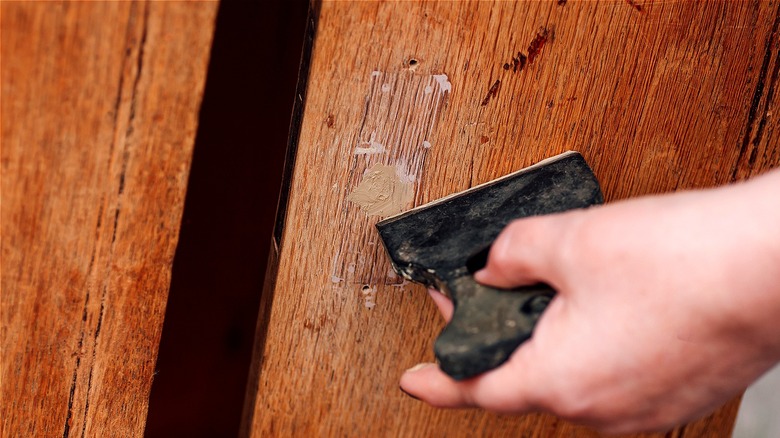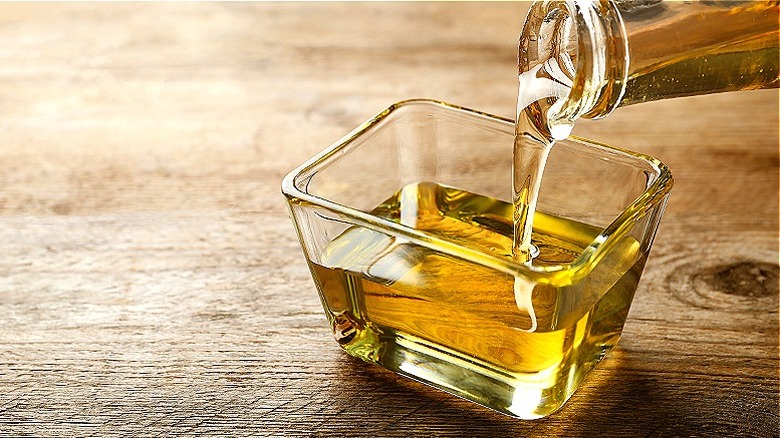Bring Dried-Out Wood Putty Back To Life With One Ingredient From Your Kitchen
We may receive a commission on purchases made from links.
Wood putty (not to be confused with wood filler) is a common item found in the repair arsenals of many homeowners and renters alike. Also called plastic wood, it looks like clay and is used to seamlessly fill small holes in stained or painted trim, furniture, and flooring. But while it works great to cover up such minor imperfections, it's also a product you won't use too frequently. After all, it's not every week you have to fill in nail holes, dings, or dents. Because of this, wood putty has a tendency to dry out in its jar before you can use its entire contents. But that doesn't mean you have to throw it out! You can bring dried-out wood putty back to life with the help of canola oil. This common kitchen staple will infuse the putty with moisture, helping it regain its pliability and elasticity.
Unlike wood filler, wood putty doesn't actually harden completely, and its flexibility is why the product works so well for finished wood (like flooring) that will expand and contract in response to humidity and temperature. Restoring that flexibility with canola oil is a start, but keep in mind you don't want to add too much to the point you affect its composition. Wood putty also isn't stainable. That's why it comes in various colors, to match different shades of finished wood. You can also blend wood putty colors to make the very color you need. But if wood putty is dry, it obviously makes blending much more difficult, if not impossible.
How to use canola oil to revive dried wood putty
There are two methods you can use to restore old wood putty with canola oil, depending on how dry the compound is. If the putty is still malleable but is beginning to dry in certain areas, it's enough to add a few drops of canola oil into the putty and knead it into the product. Try to concentrate the oil on the driest spots, infusing them with fat and making them pliable once again.
The second method of the hack is best for wood putty that's completely dried out. For this method, remove the putty from the jar, add a squirt of canola oil, and knead it into the product for 30 seconds to a minute, dispersing it evenly throughout. Once it feels moist again, put it back into its jar, and seal it to keep air out so it's ready for your next wood-repair project.
And that's all there is to it. To underscore, though, how little wood putty a project normally needs, consider the size of a typical jar of Minwax putty. Here's one on Amazon, priced at $6, in walnut; it contains 3.75 ounces of putty. While that's not much, it's more than enough to fill a small hole left behind by a nail or an accidental dent in a room's crown molding. Then again, these two wood repairs likely won't even use the same shade of putty, which is why it's not uncommon for people to have several jars of wood putty in their toolbox. And why you can easily have so much left over to dry out.

